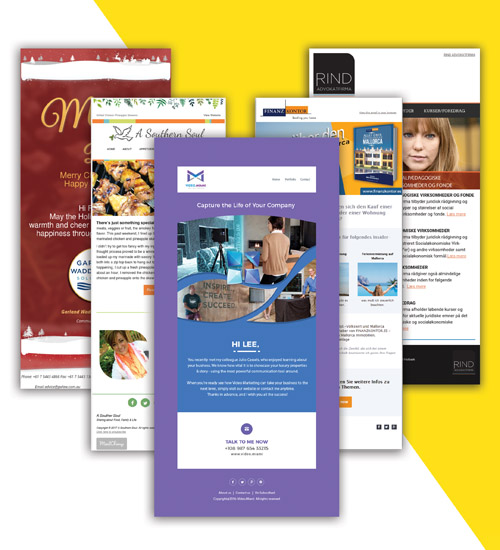Among paradoxes, Schrödinger’s cat stands as one of the most intriguing and perplexing concepts in the world of quantum mechanics. But have you ever thought about how this paradox might also apply to something as mundane as your email inbox? In this blog, we’ll delve into the curious connection between Schrödinger’s cat and our daily digital correspondence.
The Schrödinger’s Cat Paradox
For those unfamiliar with Schrödinger’s cat, it’s a thought experiment that illustrates the bizarre nature of quantum superposition. In this scenario, a cat is placed inside a sealed box with a vial of liquid that could either be harmless water or deadly poison. The catch is that until you open the box and observe, the cat is considered both alive and dead simultaneously, thanks to the principles of quantum mechanics.
Schrödinger’s Email Inbox
Now, let’s make an interesting comparison. Your email inbox, much like the sealed box, is a repository of digital information. Until you open it and start reading, it contains both good and bad news, work-related tasks, and perhaps some delightful surprises. Just as with Schrödinger’s cat, you’re faced with uncertainty.
The Email Paradox
The paradox deepens when you consider what happens once you open your inbox. At that moment, you can’t undo it, much like Schrödinger’s cat’s fate once the box is opened. You might discover a bad news email that keeps you awake with worry, a piece of good news that sends your adrenaline racing, or a task that compels you to get out of bed and attend to it.
The Other Side of the Box
Now, let’s explore the other side of Schrödinger’s box – particularly relevant for email marketers. If you’re in the business of email marketing, you’re probably wondering how to apply the Schrödinger’s cat concept to your goal of achieving better open rates.
As email marketers, our mission is clear: maximize the chances of our subscribers opening our emails. The challenge lies in the uncertainty of whether our email templates will do the trick. While designing our templates, we make educated guesses about what will work best for our audience. But the catch is, that we can only find out whether our cat “lives” (the template worked) or “dies” (the template failed) after we hit the send button. By that point, the box is opened, and there’s no turning back.
But here’s where the age-old paradox gets a modern twist, thanks to a platform like Mailchimp. They’ve finally given us the power to know the cat’s status before opening the box.
How, you ask?
- A/B Testing on Subject Lines: Even before sending your email to your entire audience, Mailchimp allows you to send two or more versions of a subject line to determine which one will yield the best open rates.
- Multivariate Testing on Send Time: With this feature, you can pinpoint the best time to send your emails to maximize engagement and open rates.
In essence, Mailchimp has effectively solved Schrödinger’s cat dilemma for email marketers. Now, we no longer have to rely on guesswork. We can strategically fine-tune our email campaigns based on data-driven insights, ensuring that the cat “lives” and our email marketing efforts are a resounding success. So, if you’re a marketer looking to improve your email open rates, Mailchimp might just be the key to opening Schrödinger’s box with confidence.
Avoiding the Mistake
So, what’s the solution to this paradoxical email situation? One word: timing. Reading emails without the right timing can lead to unnecessary stress and interruptions. Here are some recommendations:
- Read with Purpose: Only open your emails when you have the time and capacity to act on them immediately. If you can’t take action, let the pressure subside.
- Nighttime Pitfall: Reading emails just before bedtime is a mistake. It can lead to sleepless nights filled with anxiety.
- Morning Rush: Similarly, checking emails right upon waking is also ill-advised. It starts your day on a reactive note rather than a proactive one.
- Unstable Connectivity: Avoid checking emails in locations with flickery network connections. It’s a recipe for frustration.
Email’s Asynchronous Nature
Remember, email is an asynchronous mode of communication. More often than not, emails can get lost, end up in spam, or even be deleted by mistake. In the business world, unless otherwise instructed, nobody should expect you to be chained to your email inbox all day, responding instantly to every message.
The Ultimate Goal
The ultimate goal is to check your email only two or three times a day. By doing so, you regain control over your time, reduce stress, and become more efficient in managing your digital communication. As the LinkedIn post succinctly puts it, we are facing a parallel between Schrödinger’s cat and our inbox, and the key to navigating this paradox is strategic email management.
In the age of digital communication, Schrödinger’s email inbox is a paradox that many of us grapple with. By approaching our email management with intention and a clear understanding of its asynchronous nature, we can escape the paradox and regain control over our time and productivity. The lesson is simple: open your inbox strategically, and don’t let it dictate your day or your sleep.





